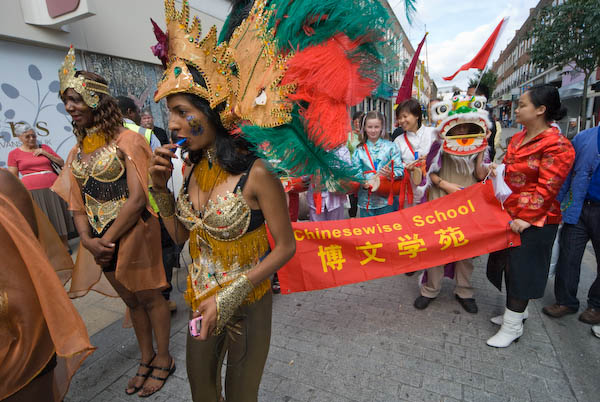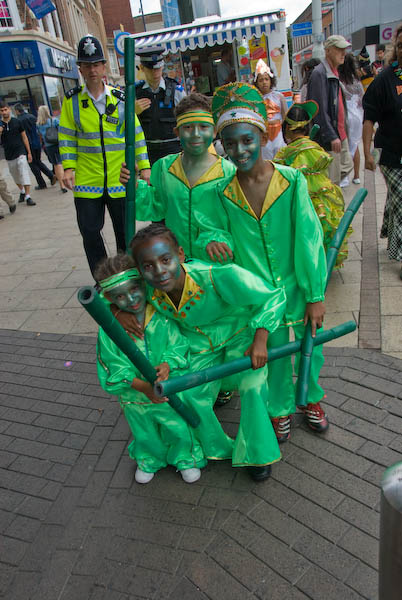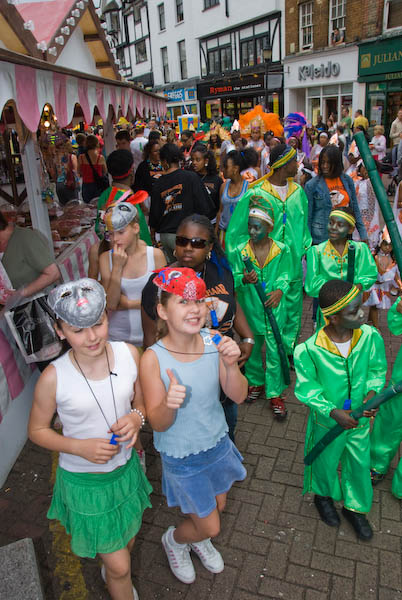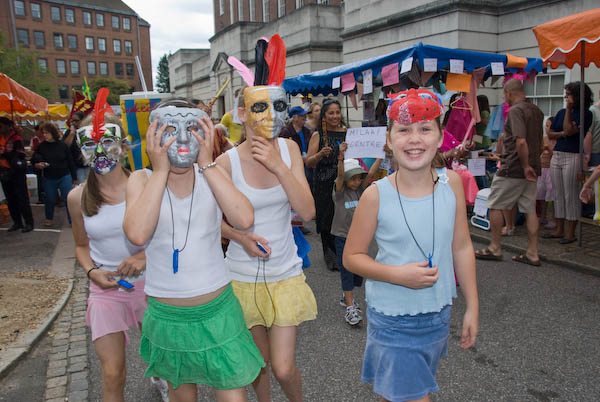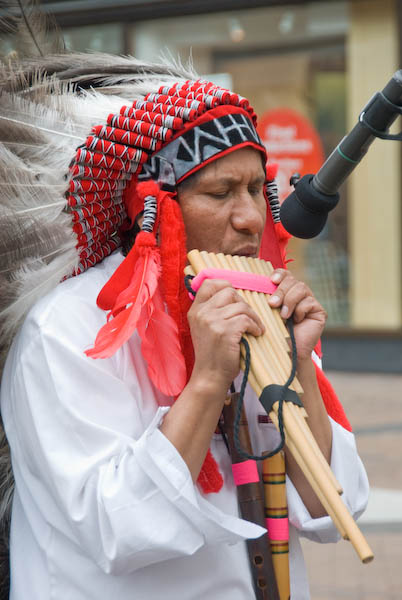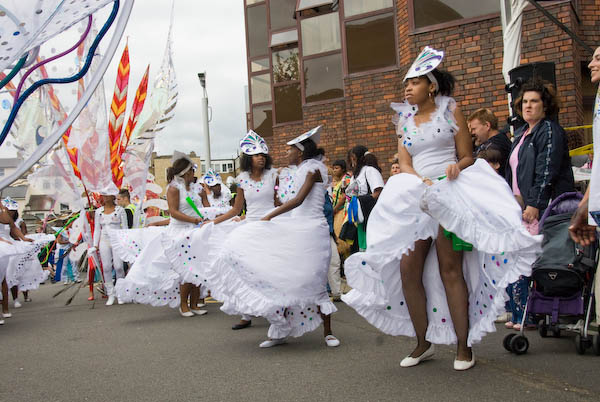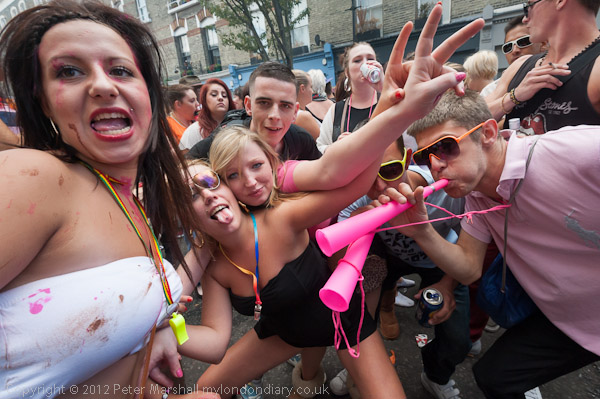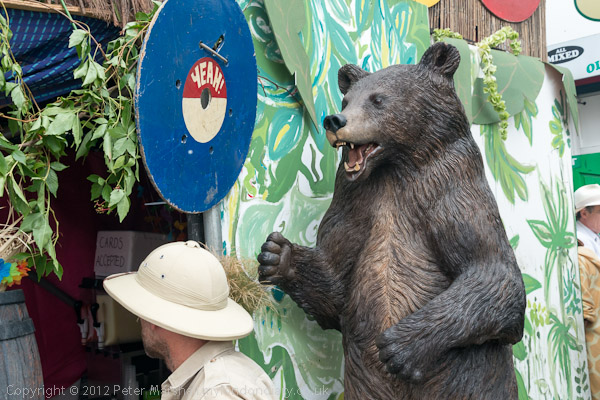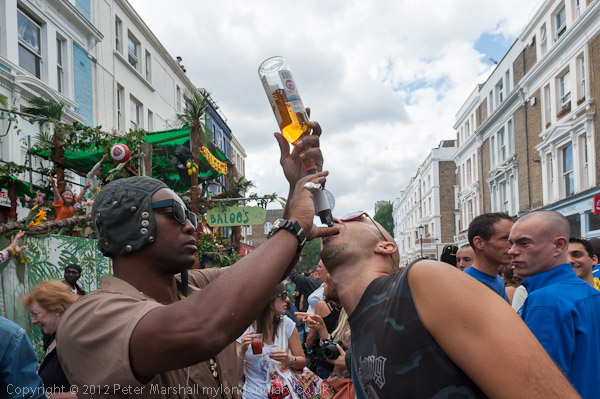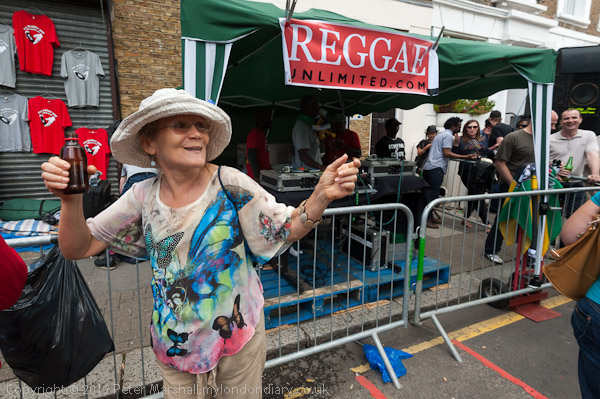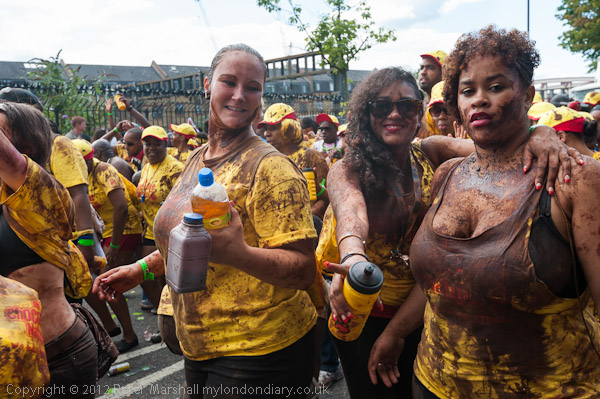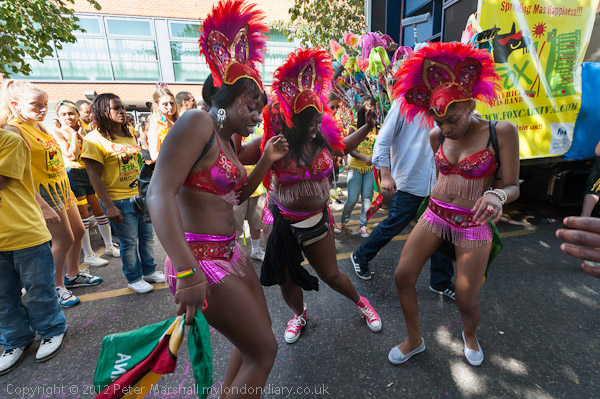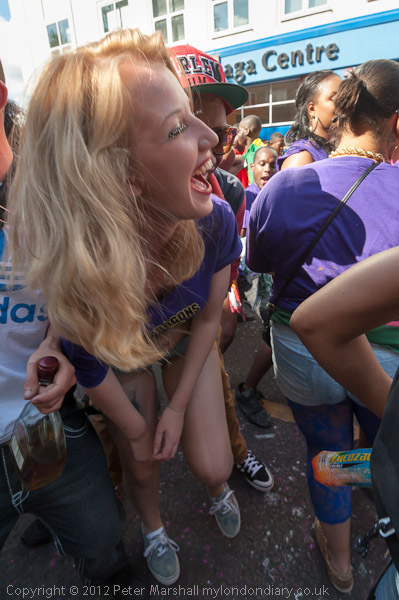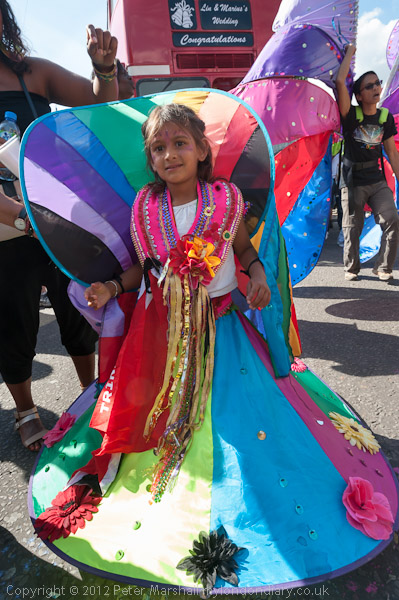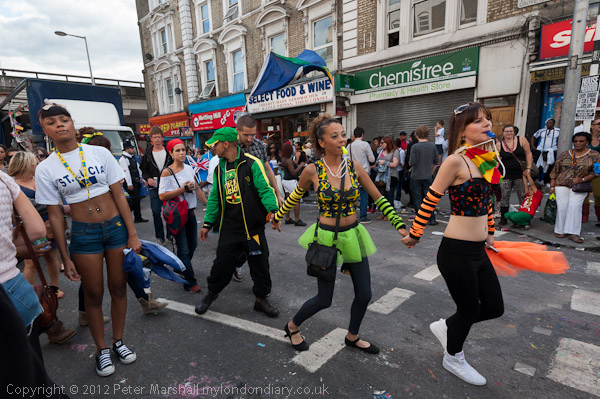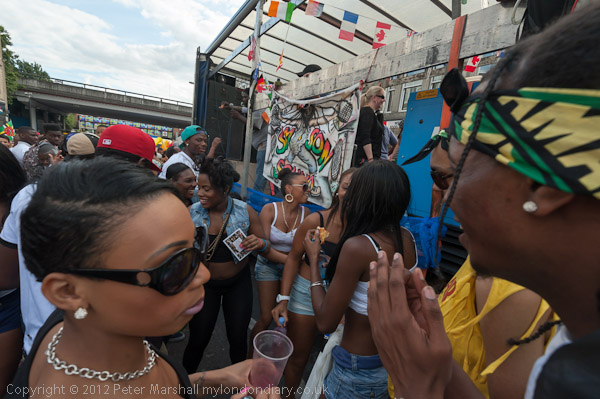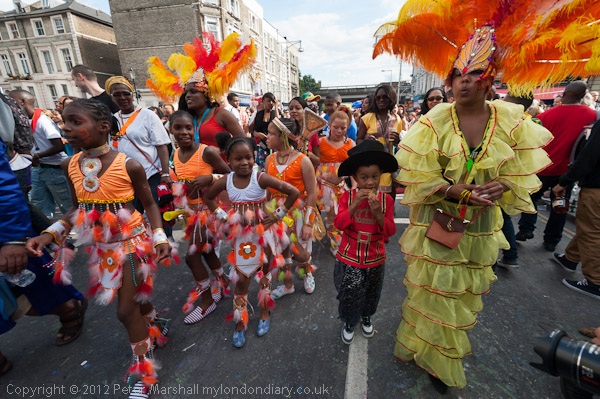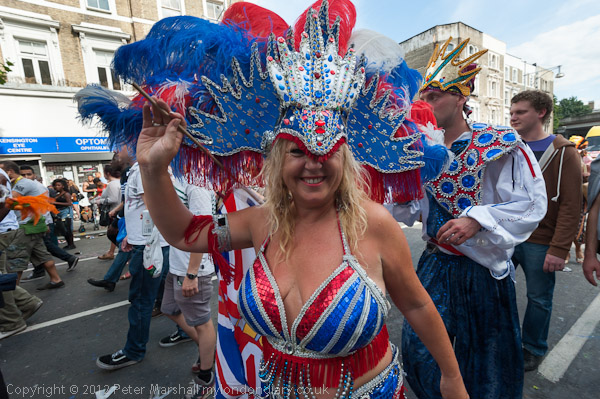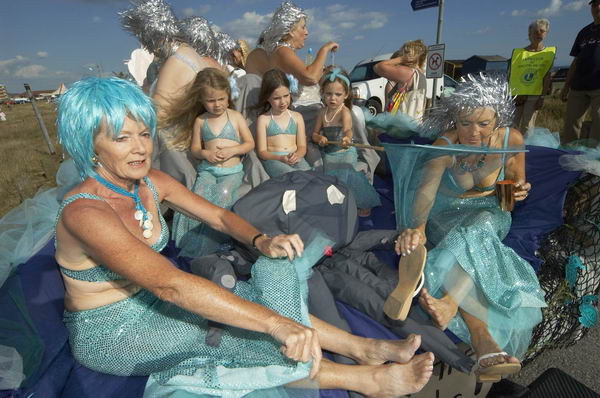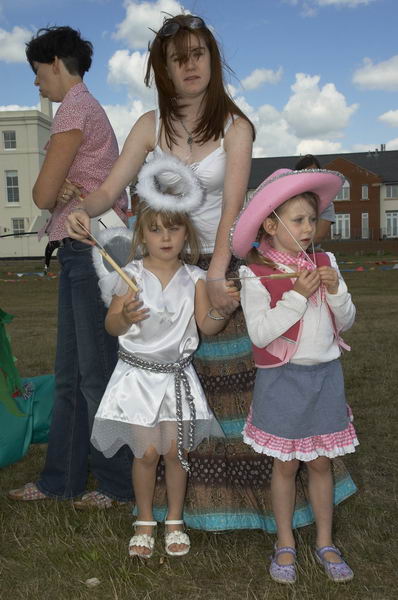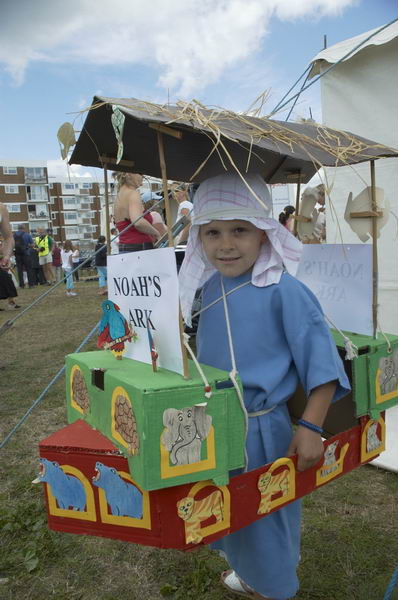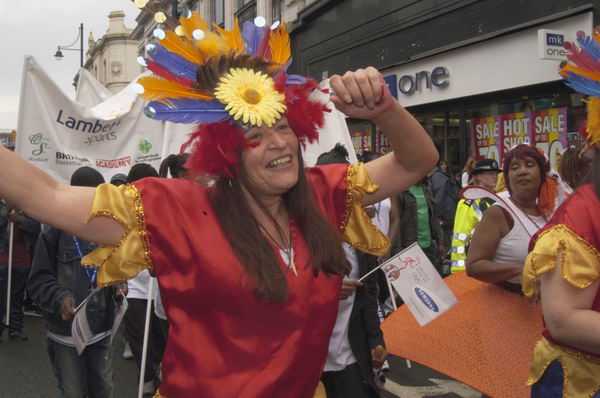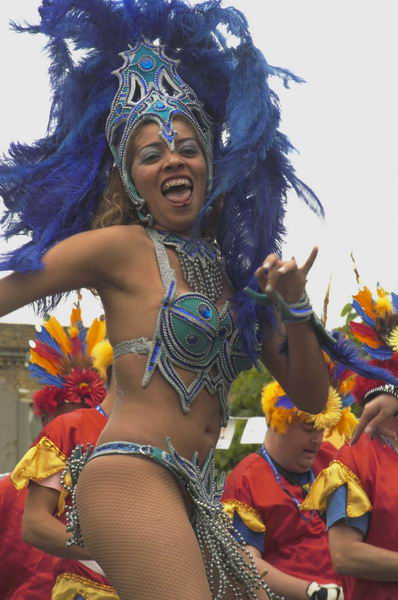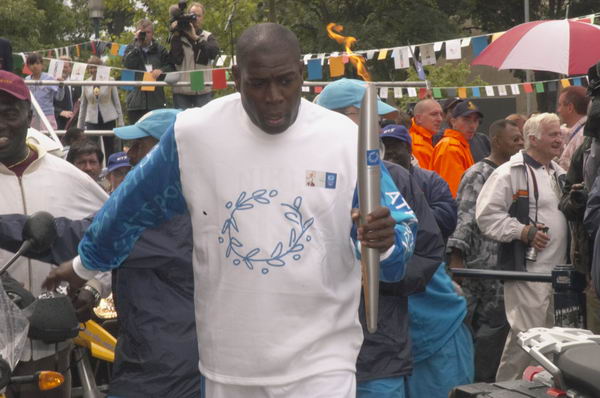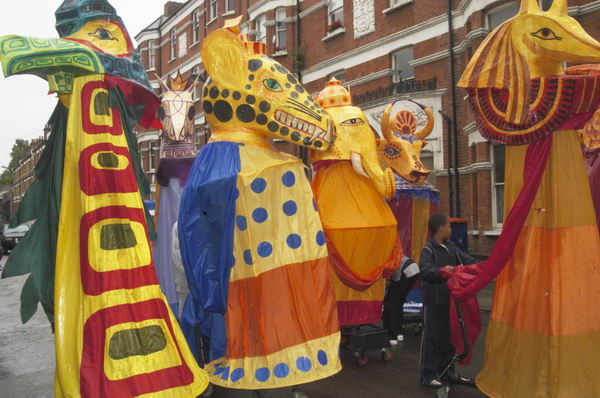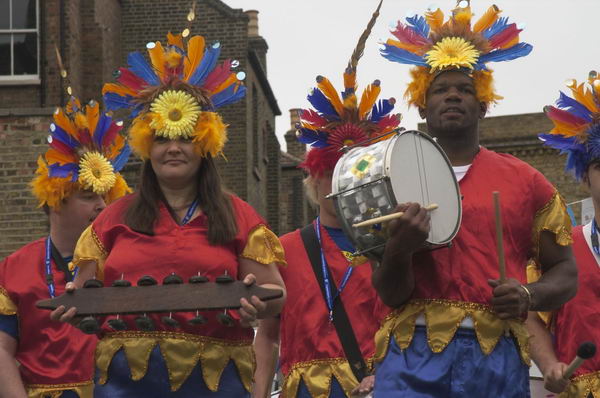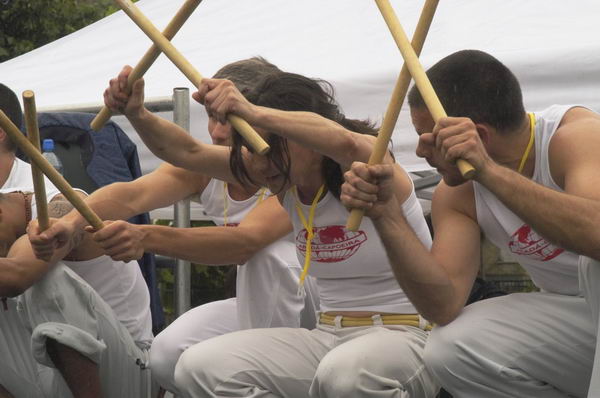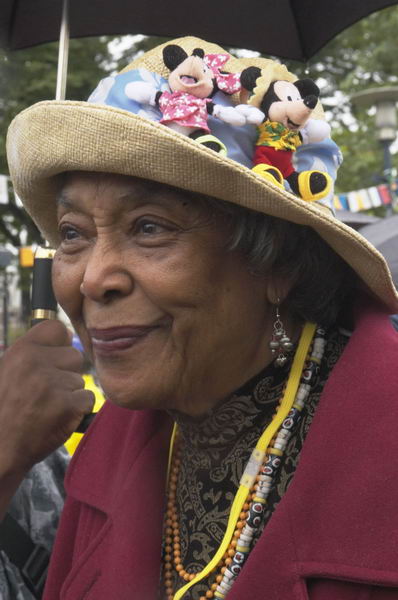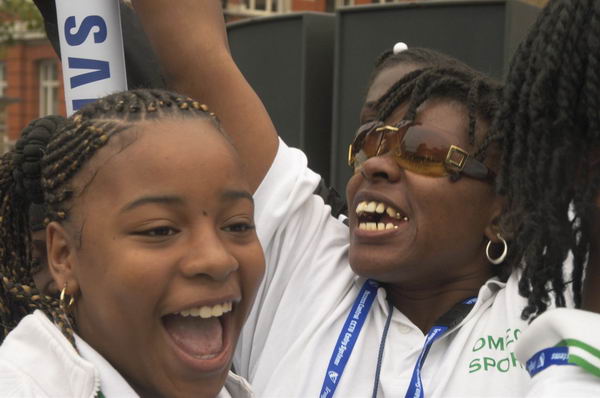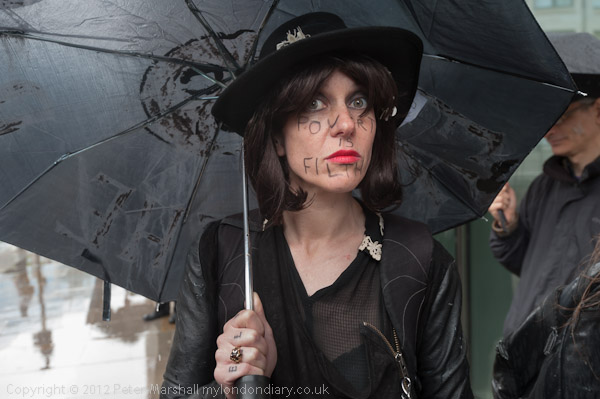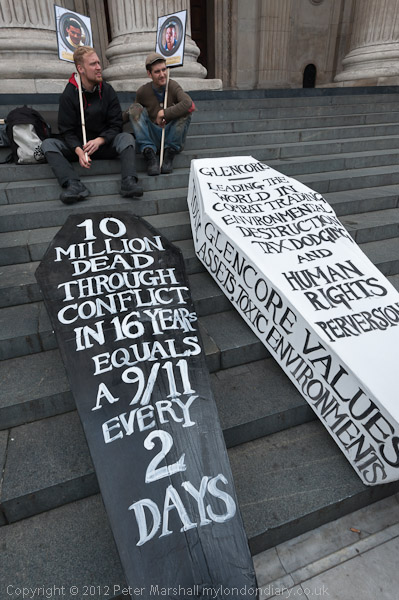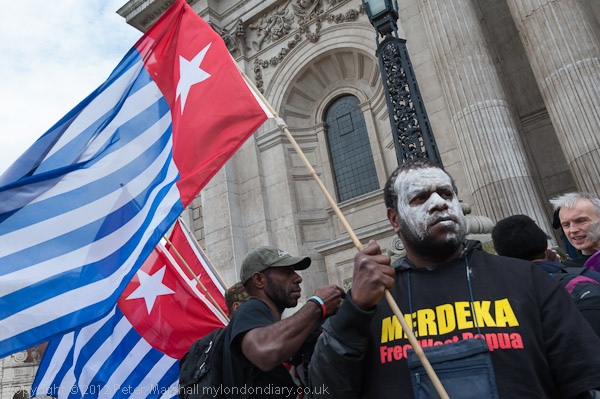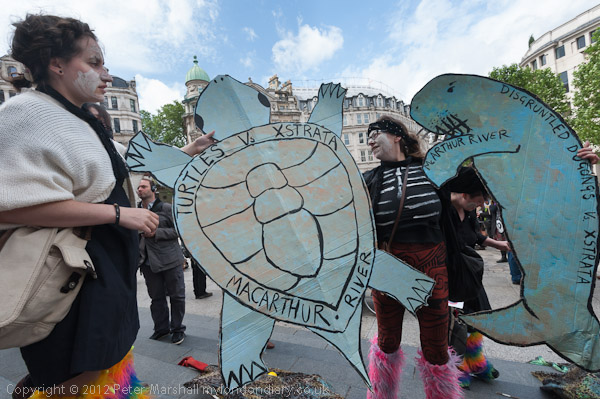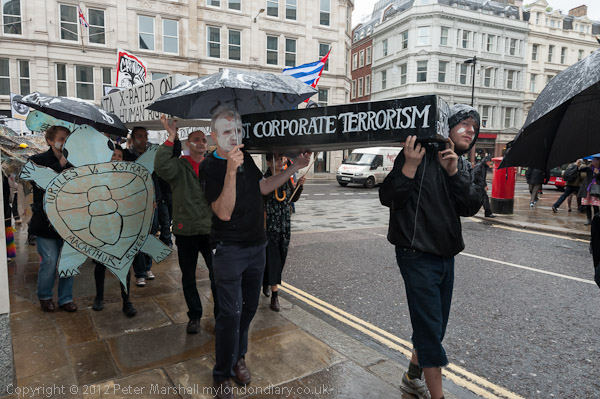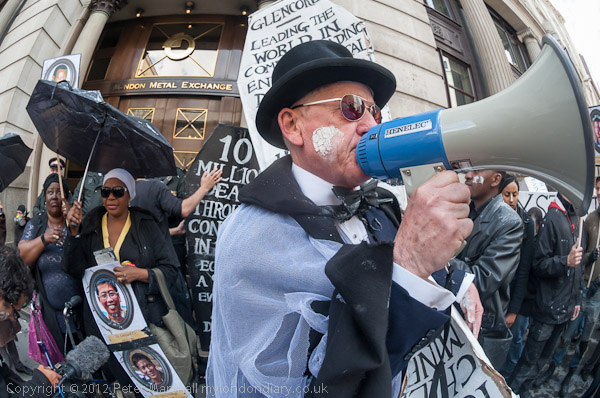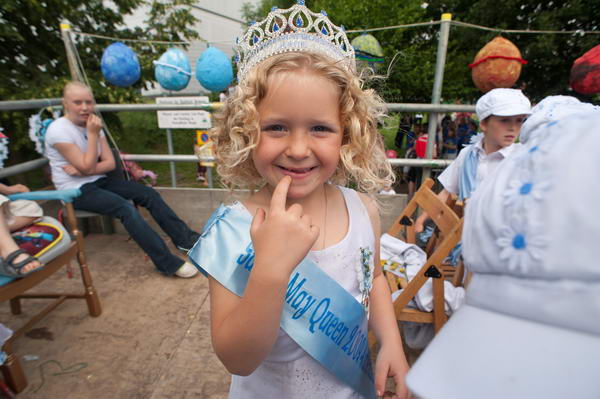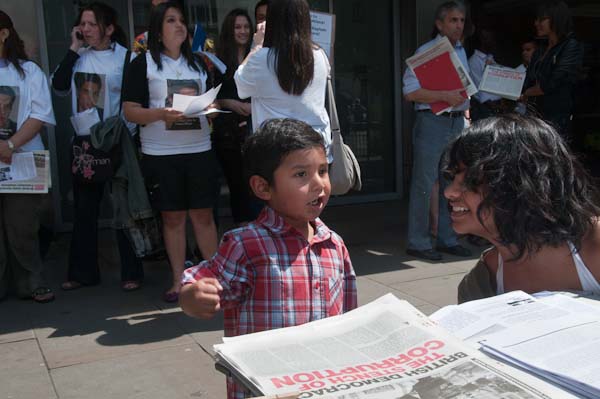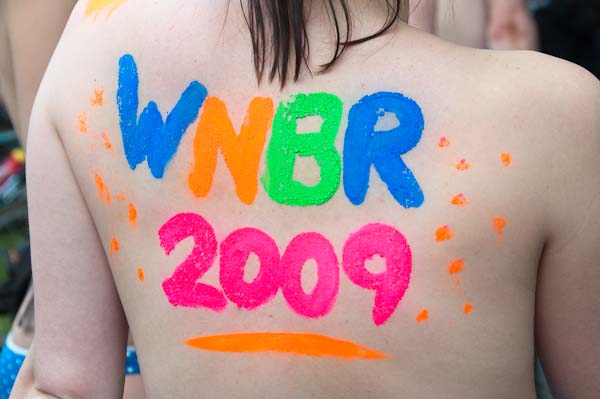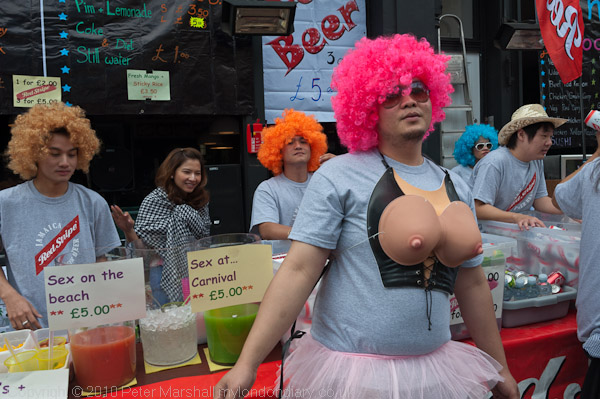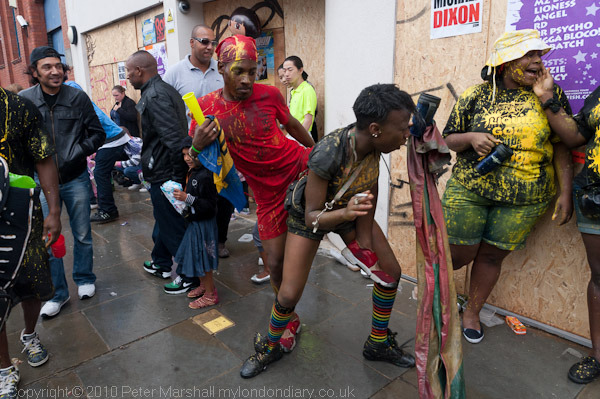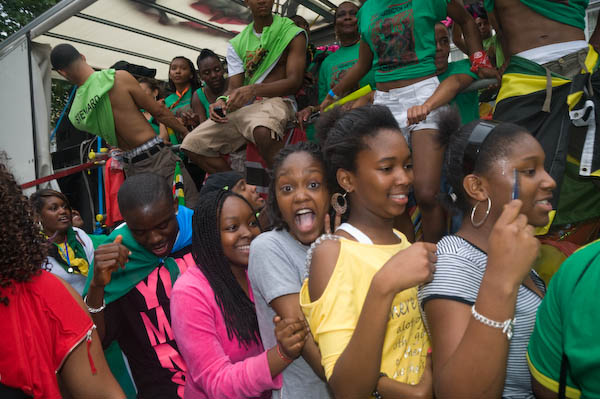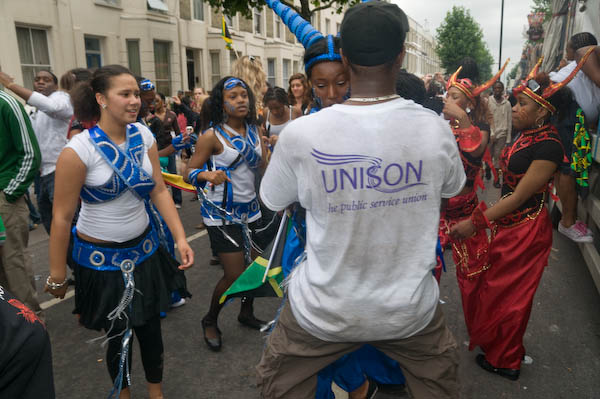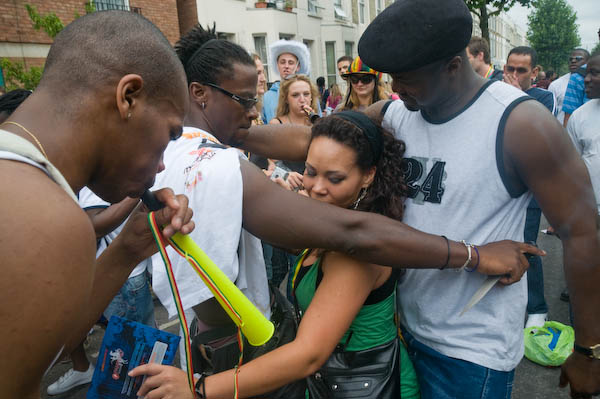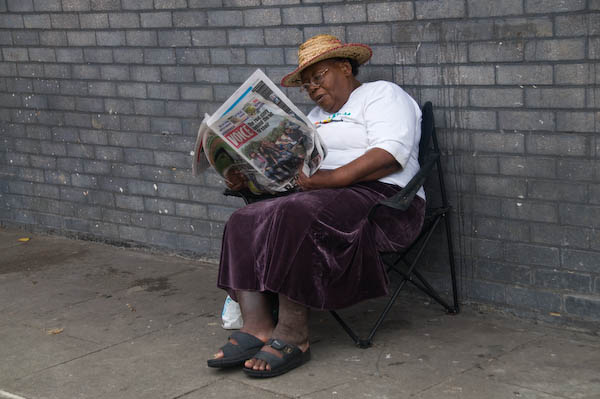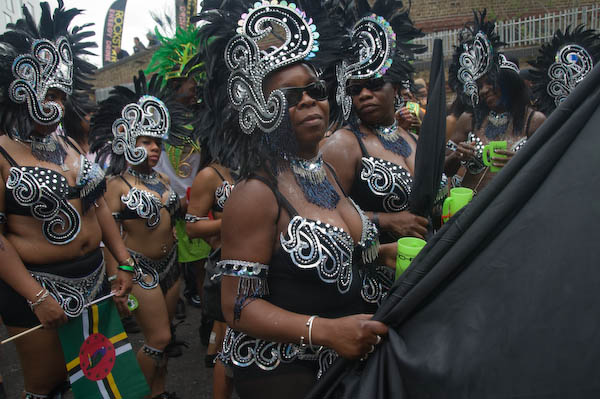Mare De Gras & Choose Life: On Sunday 10 October 2004 I photographed two very different events on the Streets of London, a carnival in Hackney and and ant-abortion march. Perhaps the only thing they had in common was that both were misnamed.
Hackney Mare de Gras
Dalston, Hackney
Mare de Gras – Fat Tuesday – is a season celebrated in New Orleans as carnival season, from 12th Night at the end of Christmas on January 6 to Fat Tuesday itself, Shrove Tuesday, the day before the beginning of Lent on Ash Wednesday, 40 days before Easter. In England our celebrations are rather shorter and involve pancakes and pancake races.
But in Hackney it was the name adopted for the carnival which began there when some residents decided it would be a good thing for them to have a carnival like Notting Hill, and since the main street is Mare Street it seemed a good name, even though it took place in September.
It wasn’t the first carnival in Hackney – there is a tradition of English carnivals dating back mainly to the late 19th century, held in many towns and villages across the country, though most have now died out. Two of my friends got Arts Council money to document some of them – and I showed work from Notting Hill with them in a show, English Carnival, in 2008. Others are still going strong particularly in the West Country. Hackney had its carnivals way back around the 1900s but I don’t think they lasted too long.
Those traditional carnivals had one thing in common – “they received no core public funding. Many were almost entirely organised by volunteers; most also raised money for charities.”
For the show I wrote: “Carnival in England has been enlivened over the last forty or so years by the Caribbean influence, and West-Indian style carnivals have received considerable funding and become a popular celebration of our multi-cultural society within the larger metropolitan areas of the country, joined in recent years by Latin American, Asian and Central European communities.”
The revival of carnival in Hackney is thought to have started as the Street Carnival Theatre in De Beauvoir, organised by Centerprise, in 1973. Later came a new Hackney Carnival – Mare De Gras – bringing together many of the carnival groups that had their roots in Caribbean culture and had begun in the 1970s, 80s and 90s taking part in the Notting Hill Carnival.
In 2004, Mare De Gras in late September was cancelled after 16-year old A level student Robert Levy was killed on Mare Street, stabbed after he had tried to keep the peace in a fight between boys close to his home, and the event was rearranged for the 10th October.
Hackney Carnival continued in later years, though the name Mare De Gras was dropped soon after 2005. In 2024 there was a parade, but for 2025 there were only a number of activities and no real carnival.
More pictures from Mare De Gras.
Choose Life March
Westminster to Lambeth
I left the carnival in Hackney soon after the parade began to photograph a much more somber event, the Chose Life March opposing abortion. Again its name seems misleading to me – opposition to abortion is not about choosing life, and as I commented in 2004, “the misuse of language in using slogans such as ‘Choose Life’ disturbs me greatly, as an attempt to preempt rational thought.“
I also wrote “Nature is profligate, full of false starts, and life cannot sensibly be considered to begin at conception” which I suspect is a quote but cannot find the source.
Many other Christians and other religions do not accept the Catholic teaching on abortion but take more sensible and more scientifically bases views. But “this doesn’t mean we should take abortion lightly or allow scientists to play as they like with human genetic material. ” And of course our laws do have important safeguards on abortion and the use of human material in research.
More pictures, including a couple of Brian Haw and one of the River Thames as the march passed them on My London Diary.
Flickr – Facebook – My London Diary – Hull Photos – Lea Valley – Paris
London’s Industrial Heritage – London Photos
All photographs on this page are copyright © Peter Marshall.
Contact me to buy prints or licence to reproduce.
